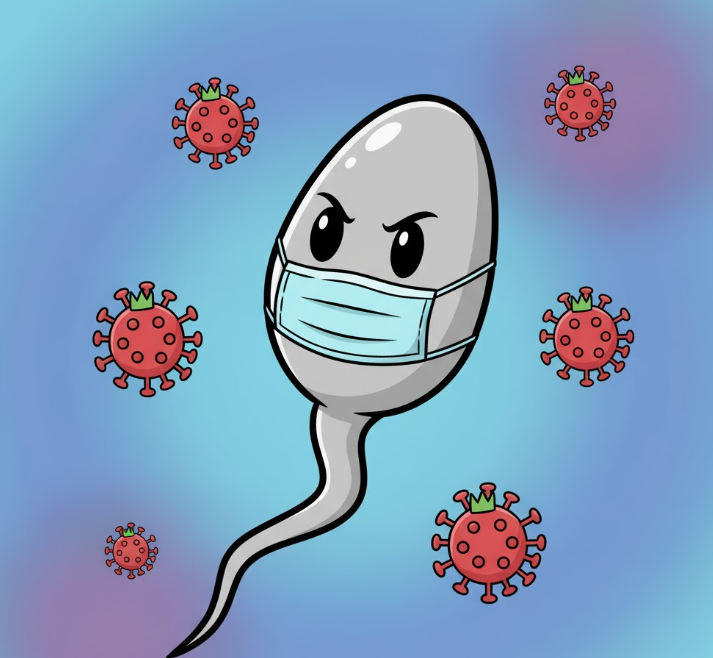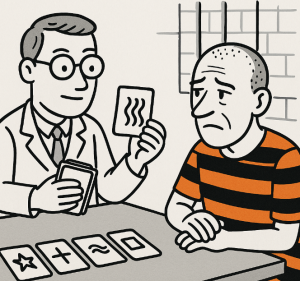
What Really Happens to Sperm After COVID-19?
When COVID-19 swept across the world, most conversations focused on lungs, vaccines, and long COVID. But scientists in China turned their attention elsewhere—to the test tube, quite literally.
Their discovery: COVID-19 doesn’t just mess with breathing—it temporarily messes with sperm.
Why This Matters
Across continents—from Lagos to São Paulo to Delhi—young couples are facing new fertility anxieties. For many men who caught COVID-19, a quiet question lingers: Did it affect my ability to have children?
A team at Tianjin University of Traditional Chinese Medicine decided to answer that question not with speculation, but with six months of hard data and microscopes.
Inside the Study
The researchers followed 74 men, all of whom had sperm tests before and after COVID-19 infection. This design was rare—most earlier studies simply compared infected men to uninfected ones.
Each participant provided semen samples at five time points:
➡️ before infection,
➡️ 1 month after,
➡️ 2 months,
➡️ 3 months,
➡️ and 6 months post-recovery.
They also completed surveys about mental health, sexual function, and quality of life.
What They Found
1️⃣ A Sharp Drop
Within a month of infection, sperm concentration fell by nearly 50%, from about 79 million to 39 million per milliliter. Motility—how well sperm swim—also plummeted by one-third.
“Sperm concentration and motility both showed significant decline at one month post-infection,” the authors report.
That’s a steep cliff for anyone hoping to conceive.
2️⃣ A Gradual Comeback
Here’s the good news: recovery began quickly. By the second and third months, sperm showed signs of bouncing back. By month six, most men’s sperm had regained 80–90% of their original quality—but not all.
The median recovery time?
- 3 months for motility
- 5 months for concentration
In simpler terms, your sperm might be sluggish for an entire season, but they’re likely to recover by the time you change calendars.
3️⃣ No Lasting Damage to Well-Being
Despite the biological blip, the men’s mental health and sexual function stayed steady. Depression, anxiety, and erectile function scores remained within normal ranges. Unlike the sweeping “long COVID” symptoms that plagued others, these participants seemed psychologically resilient.
The Science Behind the Decline
COVID-19’s assault on sperm isn’t random—it’s biological sabotage. The virus binds to ACE2 receptors found on testicular cells, the same doorway it uses in the lungs. Once inside, it sparks inflammation, disrupts hormones, and floods the body with reactive oxygen species—molecules that damage cell structures.
That oxidative stress may injure the sperm’s mitochondria—their energy source—making them weaker swimmers. Even mild fevers and immune storms can disturb the delicate rhythm of spermatogenesis, the 74-day cycle that produces new sperm.
Researchers call this a “moderate-grade spermatogenic insult.” Not catastrophic, but not trivial either.
Global Relevance: From Clinics to Communities
In many regions, infertility care is a luxury. For couples in Nigeria relying on natural conception or in Brazil’s public health clinics where fertility testing is limited, these findings offer both caution and hope.
Caution—because COVID-19 clearly disrupts sperm health. Hope—because the damage appears reversible within months.
For public health workers, the message is clear: recovering men should wait 3–6 months before pursuing fertility evaluations or assisted reproduction. Jumping in too early could misrepresent their real reproductive potential.
A Bit of Historical Perspective
This isn’t the first virus to hit male fertility. High fevers, Zika, and even mumps have left temporary scars on reproductive health. The difference with COVID-19 lies in scale—hundreds of millions of men were exposed worldwide. If even a small fraction experiences delayed sperm recovery, the societal ripple is enormous.
Beyond Biology: Why It’s an Encouraging Story
Despite grim early fears, this study reframes the narrative. COVID-19’s hit to fertility isn’t permanent—it’s a pause, not a period.
By six months, most men’s sperm bounced back. That’s a victory for biology’s resilience.
It also shows that routine health tracking matters. Because these men had pre-infection data, researchers could make definitive comparisons—something few pandemic-era studies achieved. In resource-limited settings, such meticulous follow-up could shape how reproductive health programs monitor future viral outbreaks.
But Here’s Where It Gets Interesting…
Some subtle sperm traits—like the beat cross frequency (how rhythmically sperm tails move) and lateral head displacement (how the head wiggles while swimming)—stayed lower even after six months.
Does that mean microscopic damage lingers longer than we think? The authors urge longer follow-up studies, possibly extending beyond a year.
That unanswered question could drive the next wave of global fertility research.
Let’s Explore Together
Science thrives when it sparks new questions, not just answers.
So, what do you think?
- Could these findings guide public health advice for post-COVID family planning?
- Should sperm analysis become a standard check-up for men recovering from major infections?
- If you were on this research team, what factor—nutrition, vaccination, or viral strain—would you test next?
The Takeaway
COVID-19 can temporarily halve sperm count and motility—but the body’s reproductive machinery is remarkably resilient. Most men bounce back within half a year, without lasting harm to sexual function or mental health.
For early-career scientists, this study is a masterclass in longitudinal design and recovery science—a reminder that even in pandemics, the human body finds ways to heal itself.



